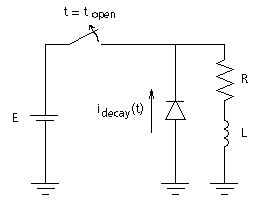
Starting a simulation and bringing it to steady state, can prove to be a valuable exercise in itself. The process can indicate how robust the models included are and, if the simulation fails to reach steady state (i.e. diverges), provides a warning that problems exist that require attention.
There are generally two ways to start a simulation: Start from time zero with no initial conditions (i.e. start from the Data file created when the project is compiled) or start with pre-calculated initial conditions imposed on some or all elements. In PSCAD, starting a simulation with initial conditions is achieved by using a Snapshot File.
A Snapshot File can be created by starting a simulation at time zero, allowing it to settle to a steady-state condition, and then freezing all states and variables to a file by taking a snapshot. A snapshot is essentially a new Data file with everything initialized – the user may then re-start the simulation from this file.
The Snapshot file method can be used to impose initial conditions on energy storage devices (i.e. capacitors and inductors), or memory functions involving integration when present in a simulation.
EXAMPLE 2-5:
As a simple example, suppose you wish to study the effects of inductance on the diode decay current if the switch in the circuit of Figure 2-11 opens at time t = 0.1 s.

Figure 2-11 – Simple RL Circuit with Freewheeling Diode
Depending on the size of the inductance, it will take a finite amount of time for this simple circuit to reach steady state (if started from time zero). When the switch does actually open, the current flowing in the inductor will decay through the freewheeling diode. In order to study the effect of the inductor size on the decay time of the current, the simulation may need to be rerun many times. Since the time to reach steady state would be of no consequence to the study, then removing this time would be advantageous in reducing the total simulation time.
This can be accomplished in EMTDC by taking a snapshot at a time just previous to the switch opening. Subsequent runs could be started from this snapshot file, which would have stored, among other values, the current flowing in the inductor at the time of the snapshot.
Example 2-5 is a very simple illustration for the use of the snapshot file, where the time to reach steady state would be in the order of milliseconds, and of not much importance. However, snapshot files become advantageous when highly non-linear systems such as DC converters are present in the case, or when saturation is evident in machines and transformers. Initialization calculations in these situations can become horrendous to contemplate.
NOTE: Watch out for model instabilities. If instabilities are present, the project may never reach steady state (or at least an excessive amount of computer time may be needed to do so).